Abstract
Two studies were conducted to identify mechanisms responsible for observed “self-reinforcement” effects. In Experiment 1, using a studying task, self-reinforcement procedures did not work when they were private (i.e., when others are not aware of the goals or contingencies), but did work when they were public. Self-delivery of consequences added nothing to the effectiveness of the procedure. The data suggested that public goal setting was the critical element in the procedure's effectiveness. In Experiment 2, an applied extension, goal setting alone was effective in modifying over a long time period studying behaviors of people with significant studying difficulties, but only when the goals were known to others. Overall, the two experiments make more plausible the view that self-reinforcement procedures work by setting a socially available standard against which performance can be evaluated. The procedure itself functions as a discriminative stimulus for stringent or lenient social contingencies. The application of this mechanism to other problems of applied significance is briefly discussed.
Keywords: self-control, self-reinforcement, goal setting, social standard setting, public knowledge of treatment
Full text
PDF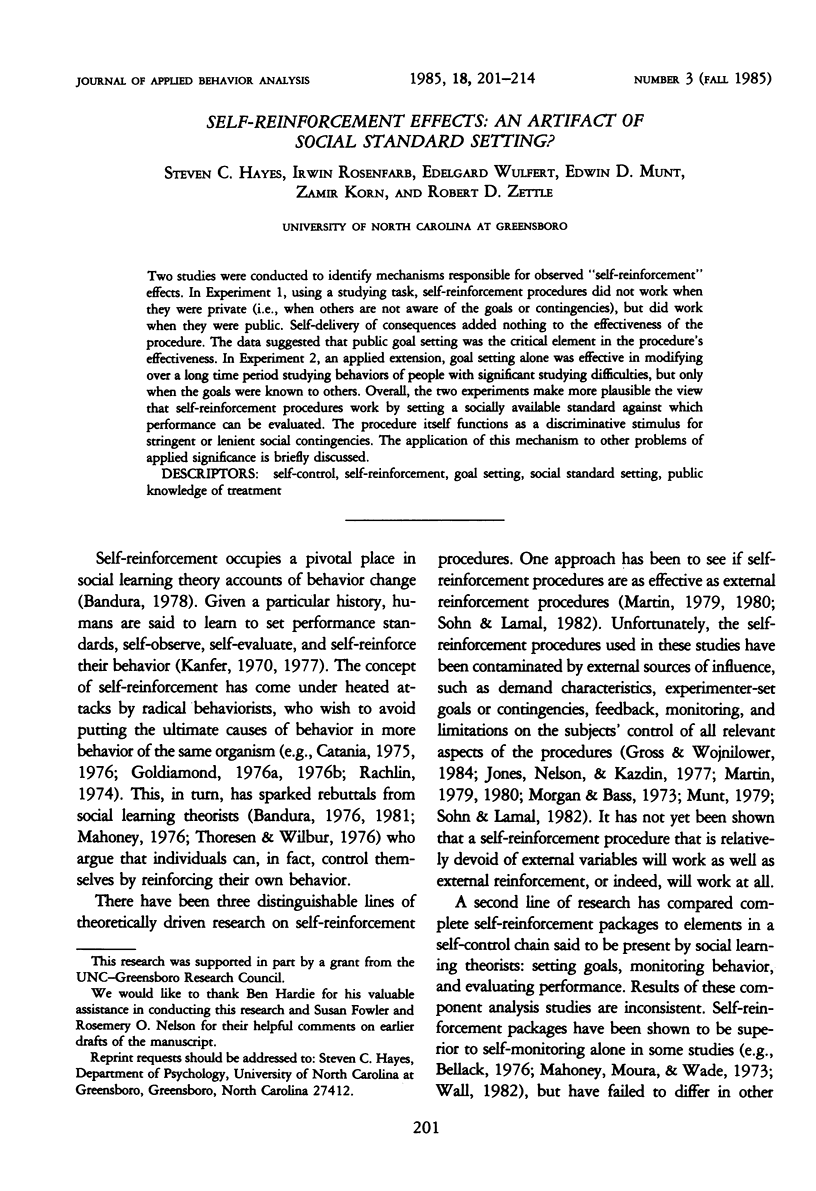
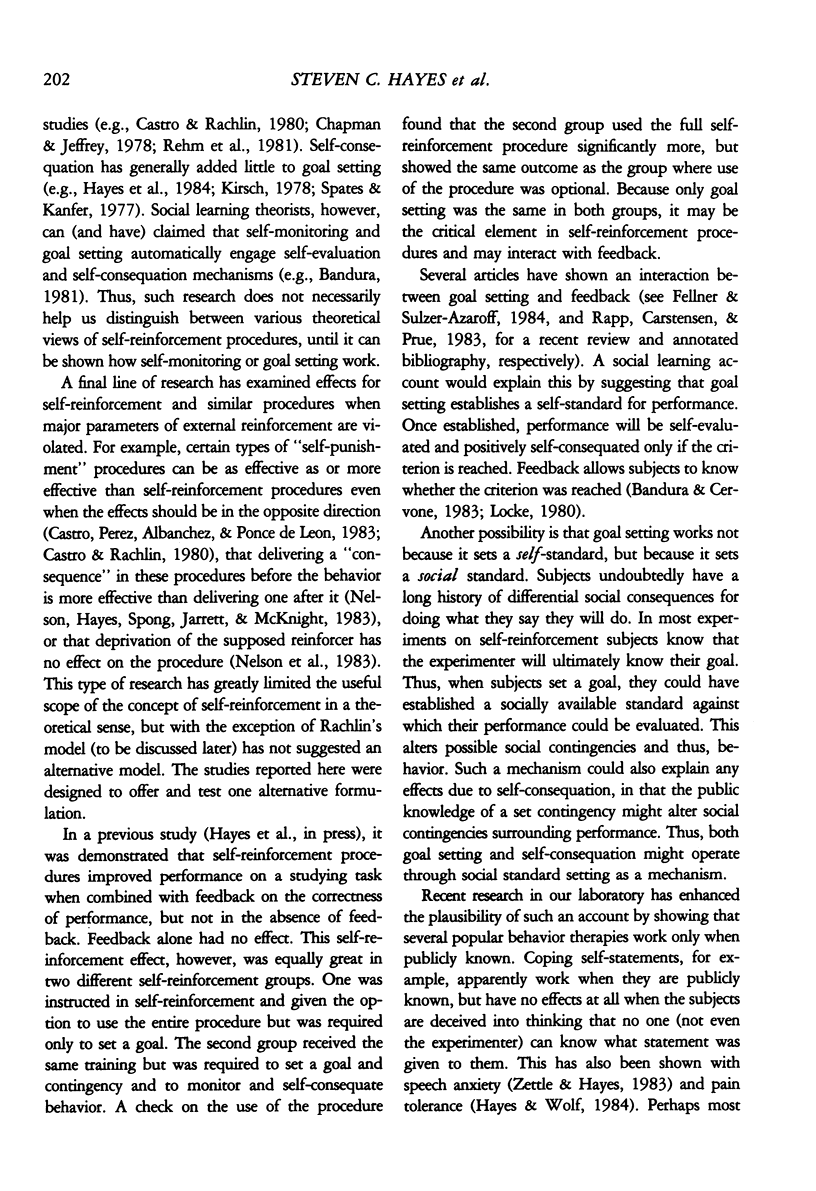
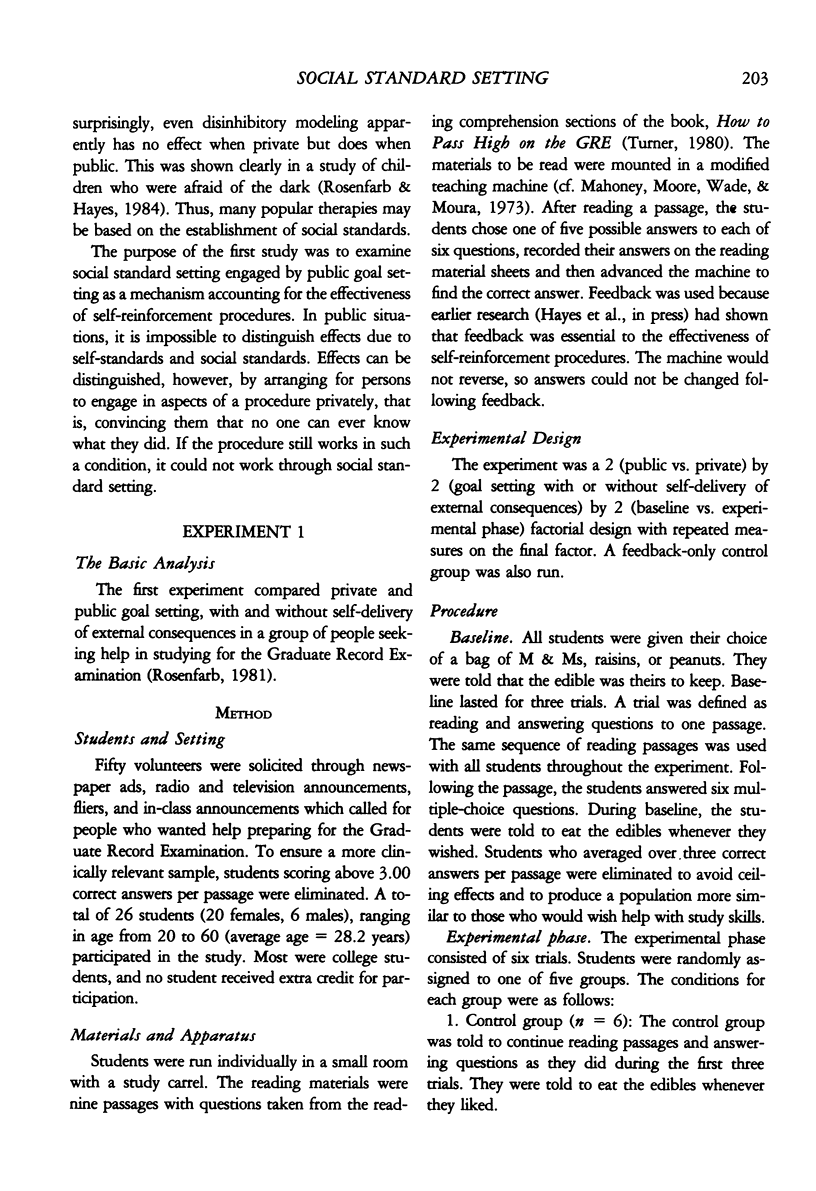
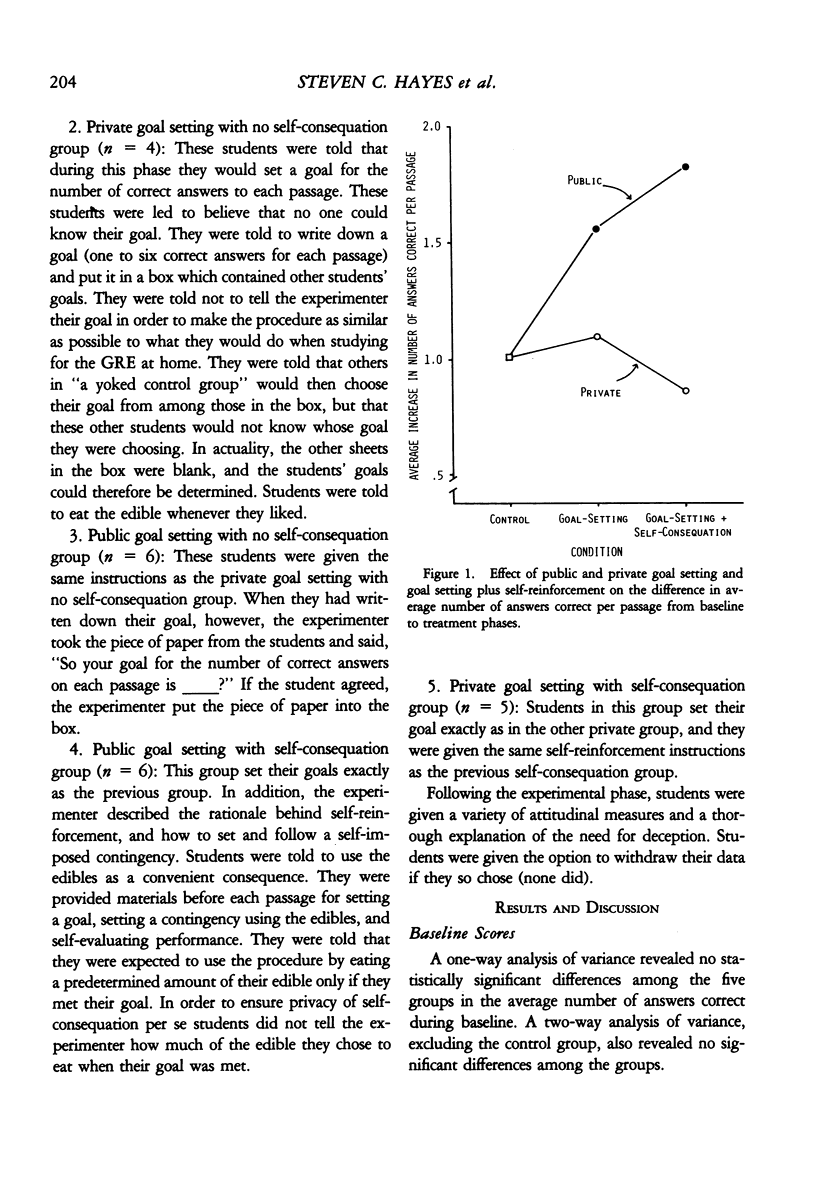
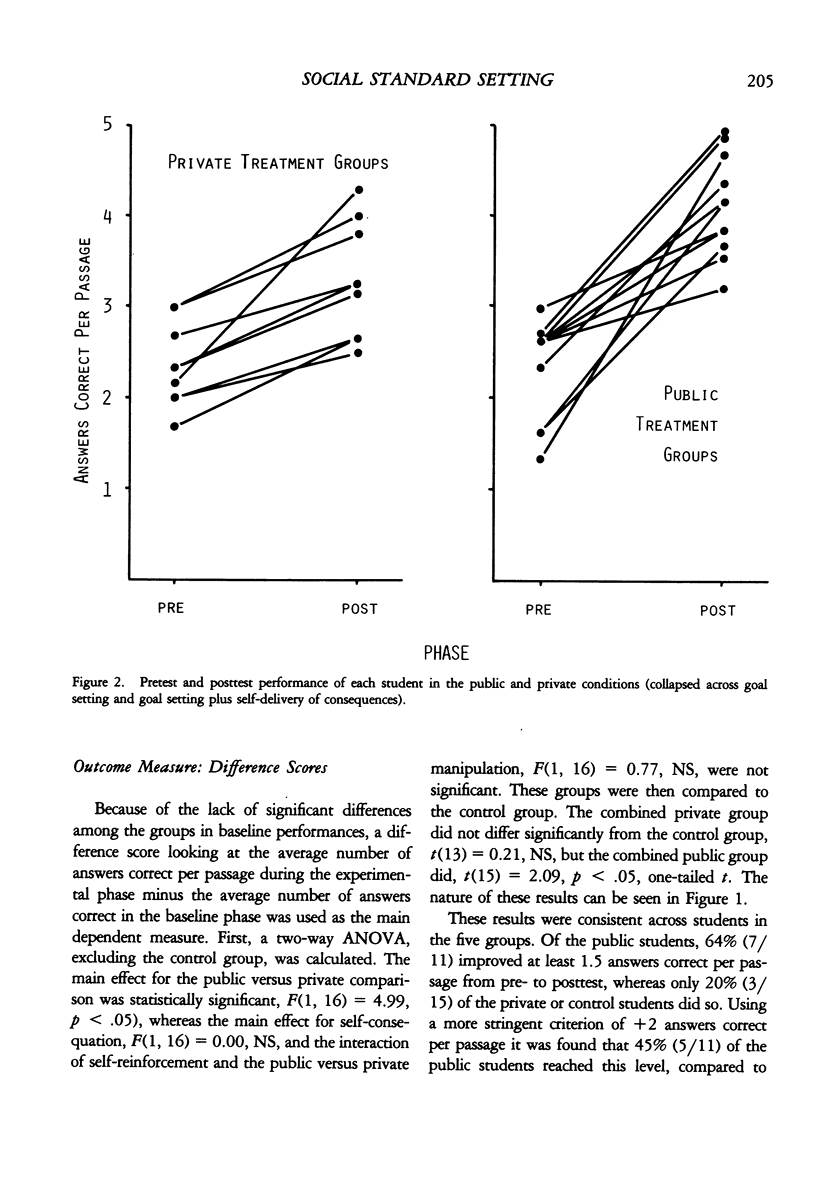
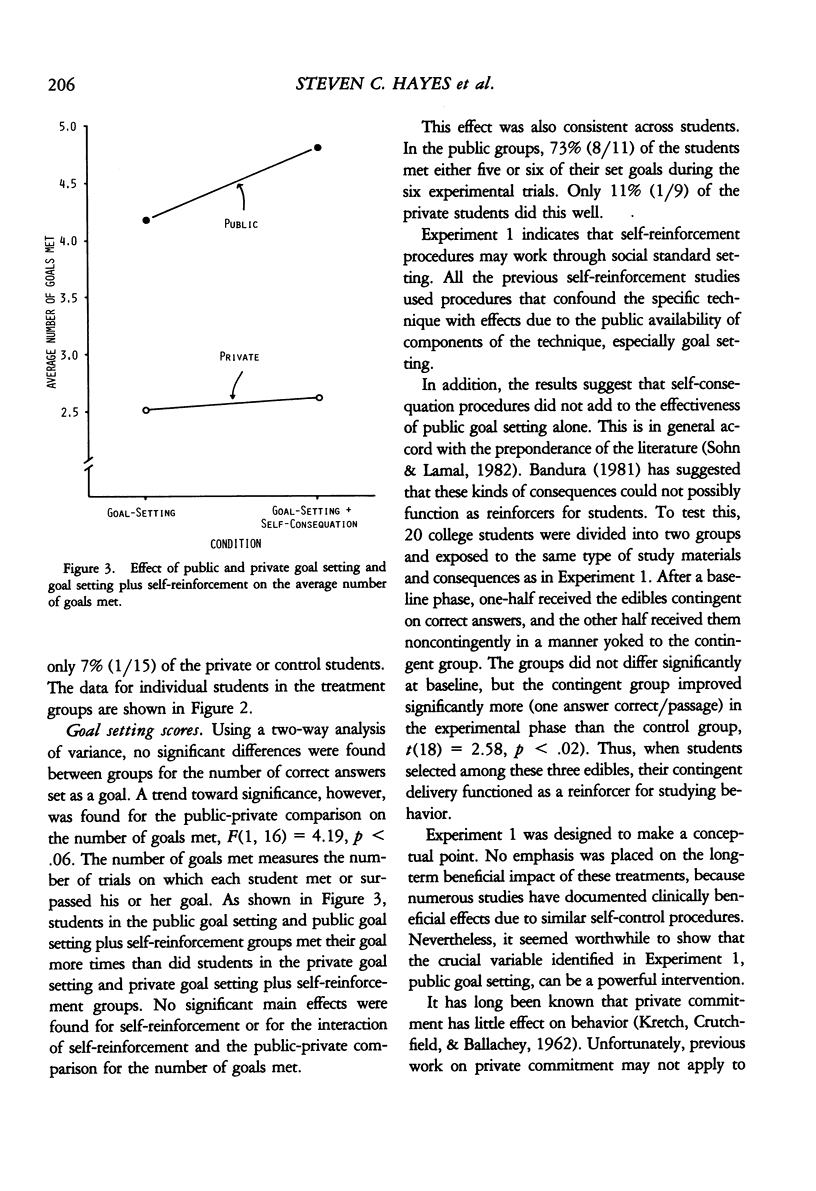
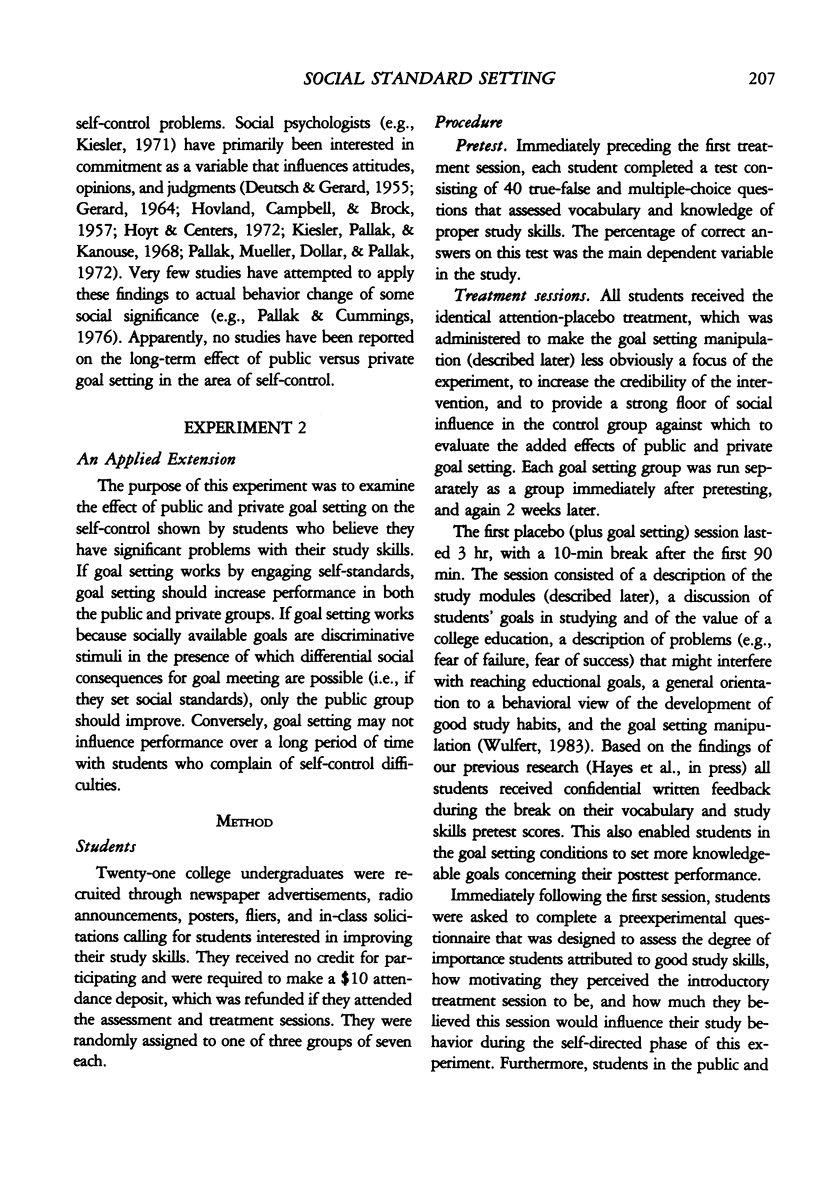
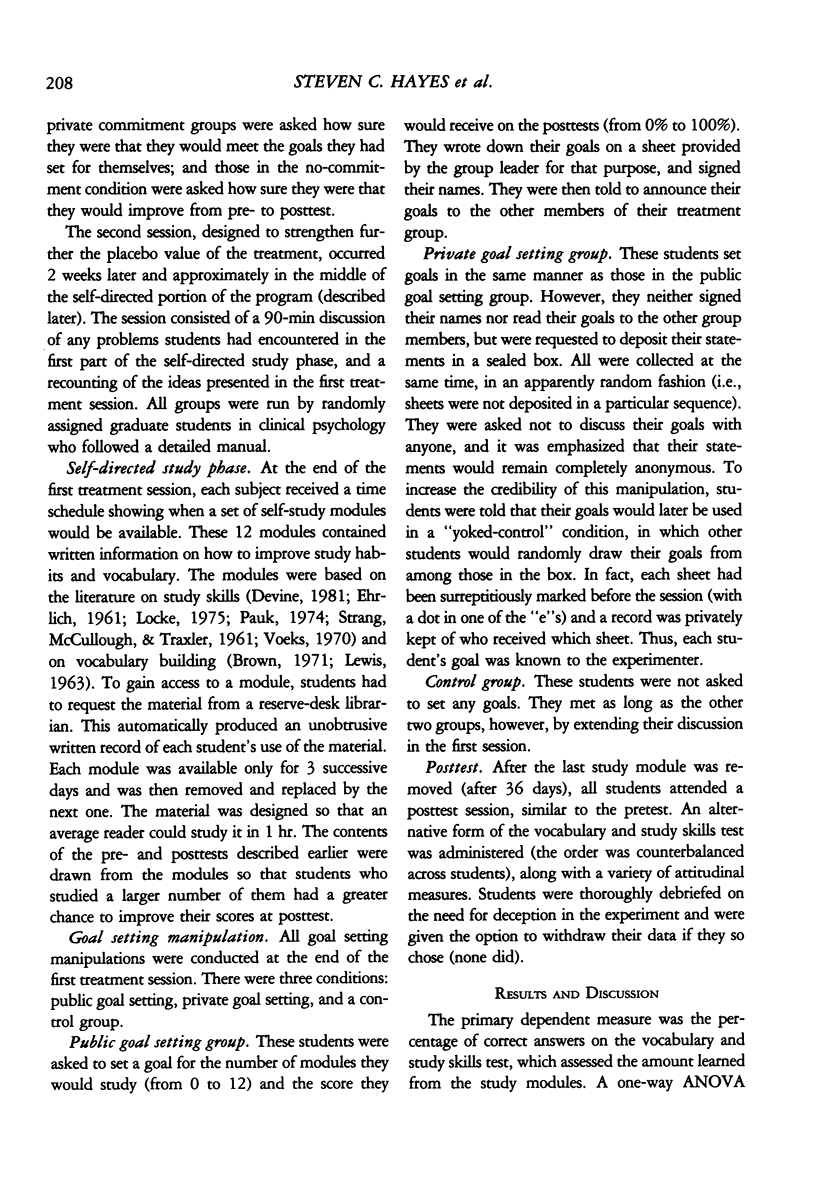
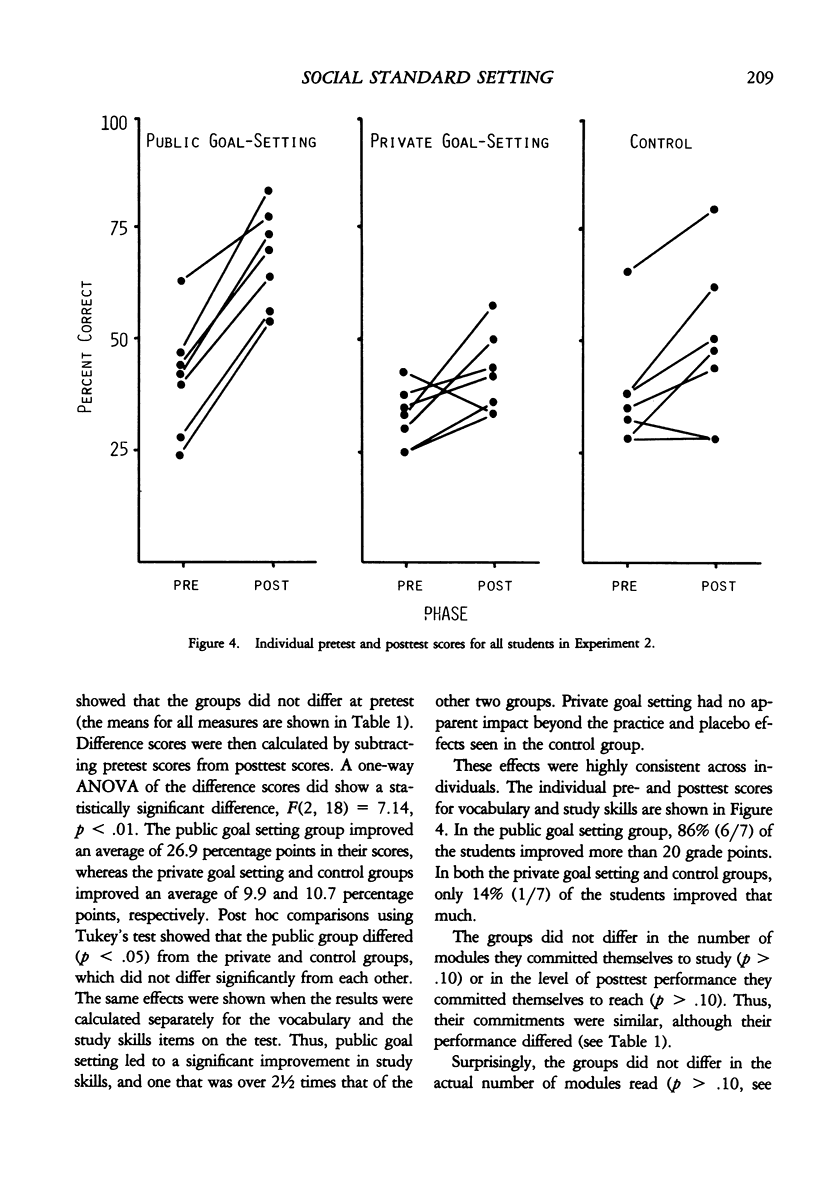
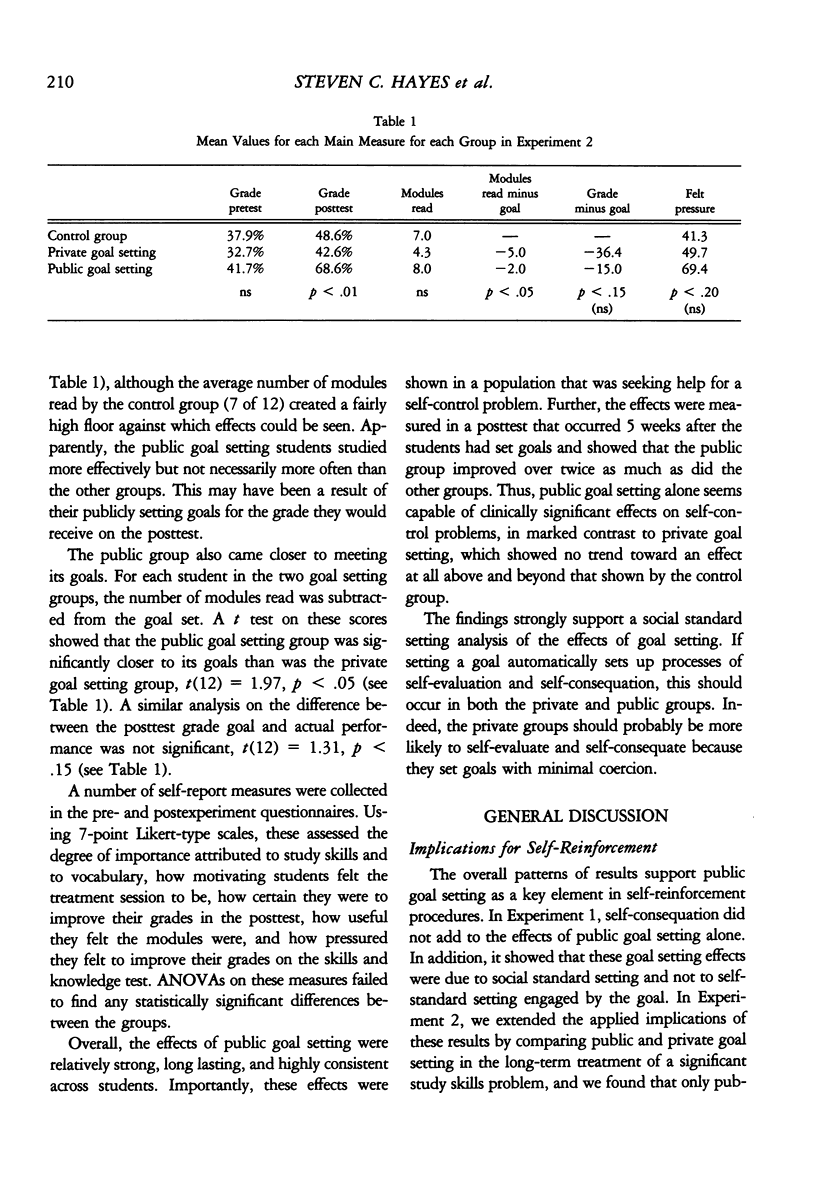
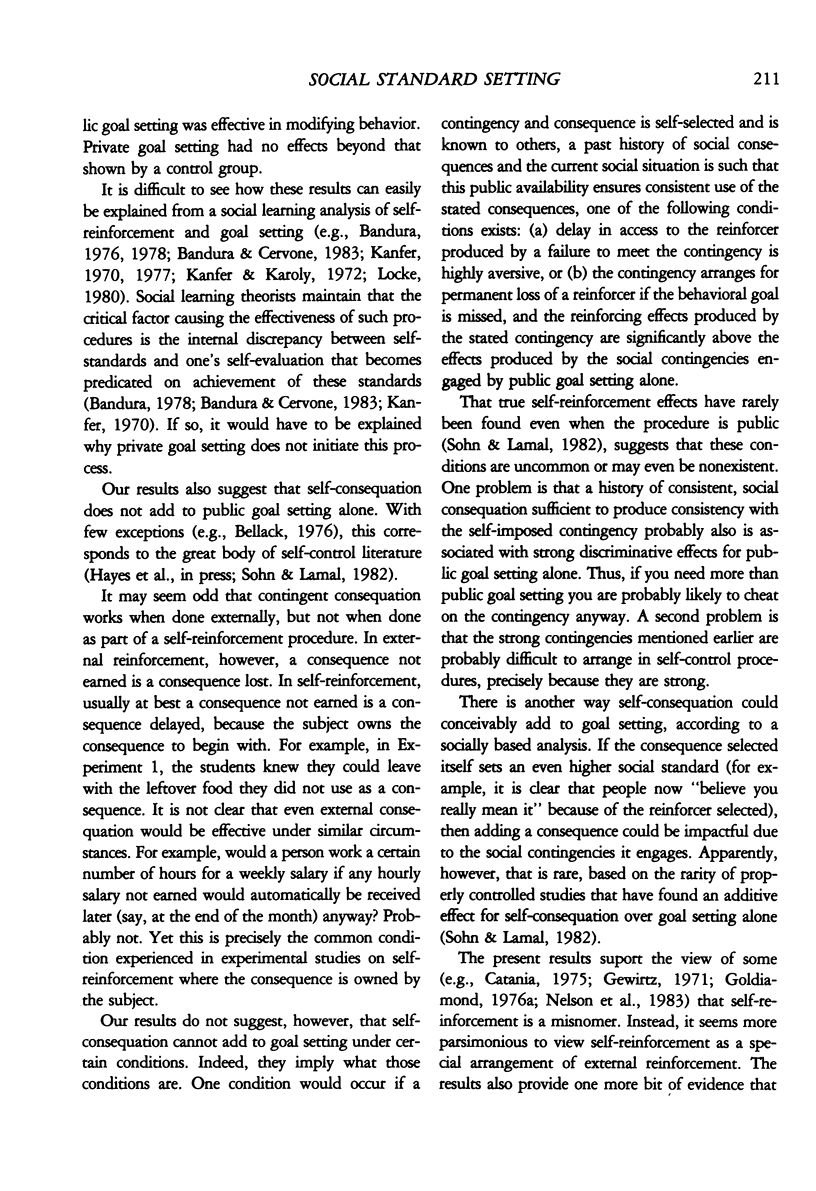
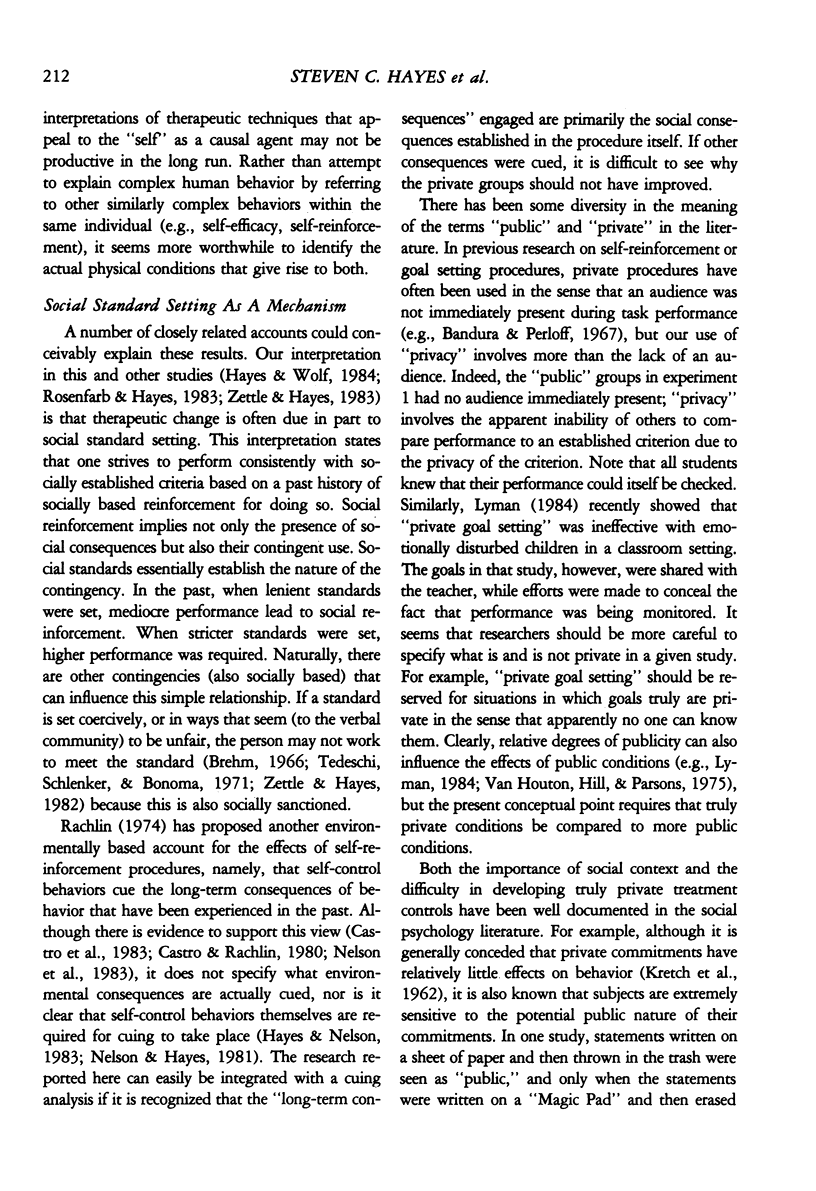
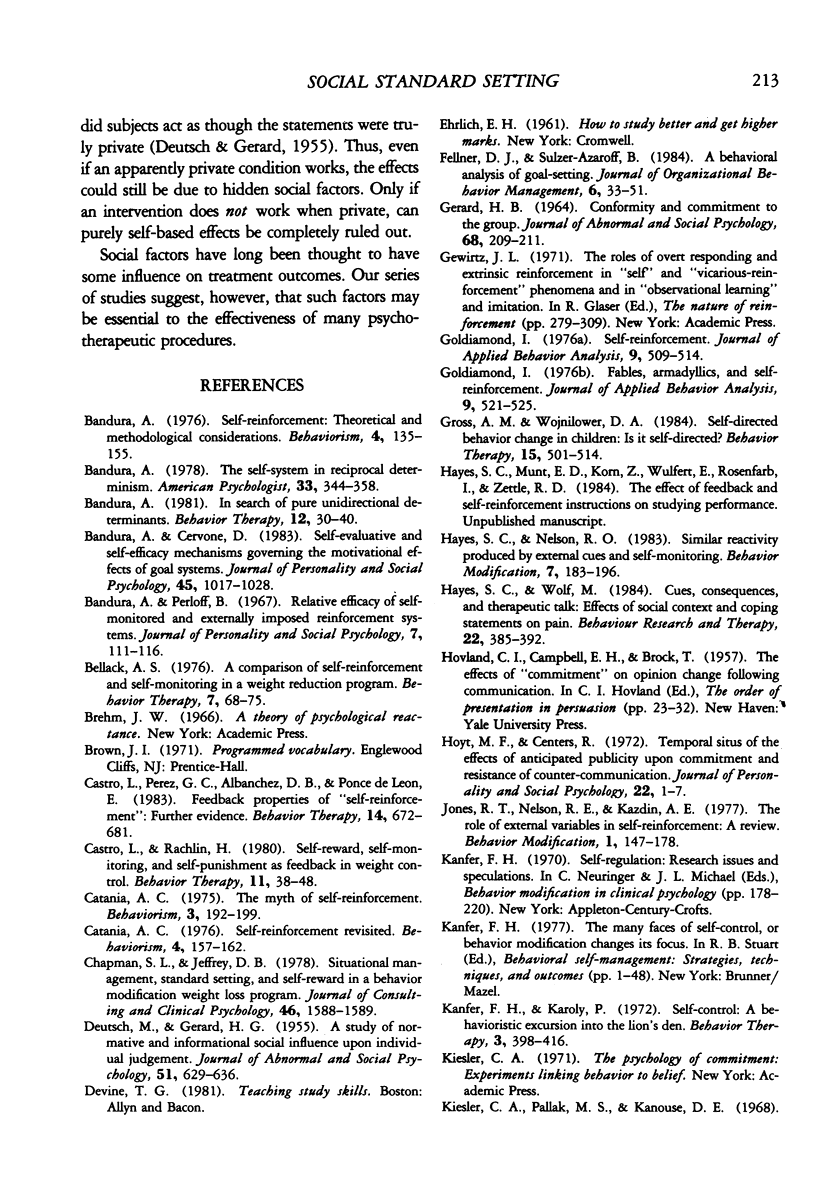
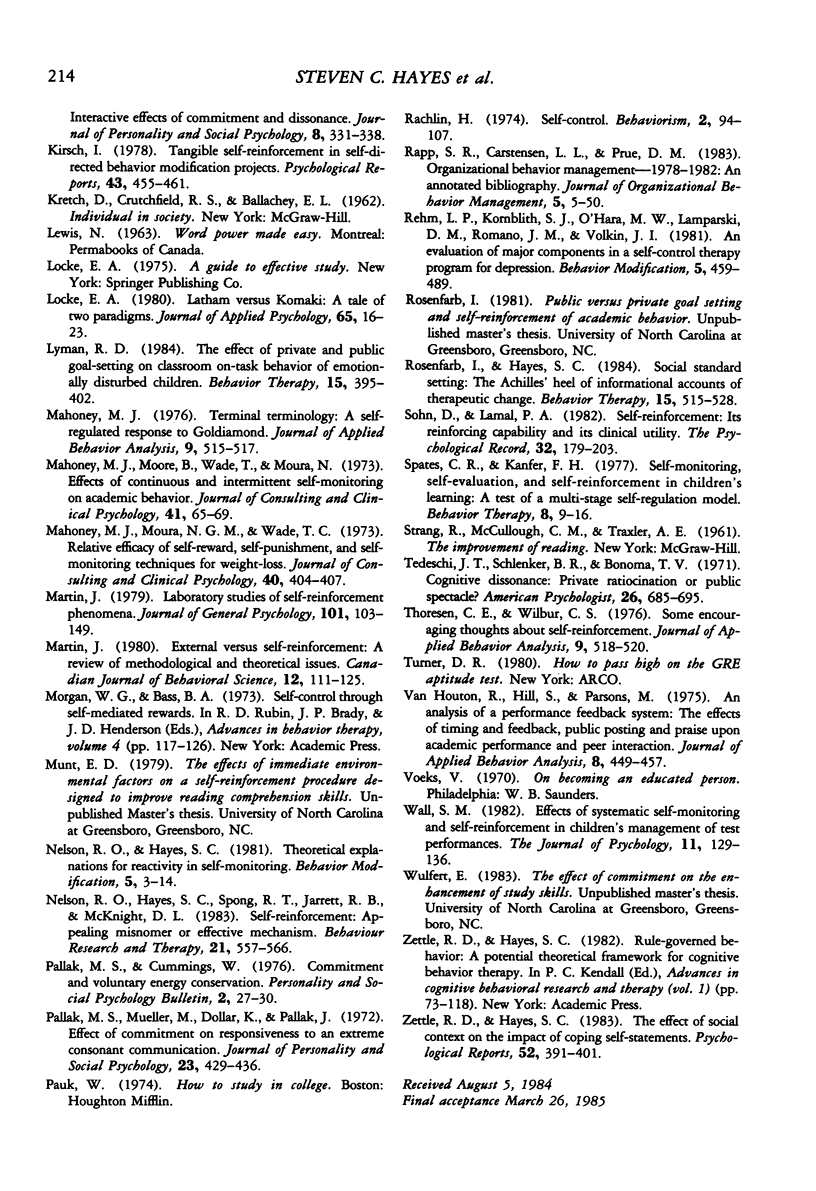
Selected References
These references are in PubMed. This may not be the complete list of references from this article.
- Chapman S. L., Jeffrey D. B. Situational management, standard setting, and self-reward in a behavior modification weight loss program. J Consult Clin Psychol. 1978 Dec;46(6):1588–1589. doi: 10.1037//0022-006x.46.6.1588. [DOI] [PubMed] [Google Scholar]
- DEUTSCH M., GERARD H. B. A study of normative and informational social influences upon individual judgement. J Abnorm Psychol. 1955 Nov;51(3):629–636. doi: 10.1037/h0046408. [DOI] [PubMed] [Google Scholar]
- GERARD H. B. CONFORMITY AND COMMITMENT TO THE GROUP. J Abnorm Psychol. 1964 Feb;68:209–211. doi: 10.1037/h0045912. [DOI] [PubMed] [Google Scholar]
- Goldiamond I. Fables, armadyllics, and self-reinforcement. J Appl Behav Anal. 1976 WINTER;9(4):521–525. doi: 10.1901/jaba.1976.9-521. [DOI] [PMC free article] [PubMed] [Google Scholar]
- Goldiamond I. Self-reinforcement. J Appl Behav Anal. 1976 WINTER;9(4):509–514. doi: 10.1901/jaba.1976.9-509. [DOI] [PMC free article] [PubMed] [Google Scholar]
- Hayes S. C., Wolf M. R. Cues, consequences and therapeutic talk: effects of social context and coping statements on pain. Behav Res Ther. 1984;22(4):385–392. doi: 10.1016/0005-7967(84)90081-0. [DOI] [PubMed] [Google Scholar]
- Kiesler C. A., Pallak M. S., Kanouse D. E. Interactive effects of commitment and dissonance. J Pers Soc Psychol. 1968 Apr;8(4):331–338. doi: 10.1037/h0021242. [DOI] [PubMed] [Google Scholar]
- Kirsch I. Tangible self-reinforcement in self-directed behavior modification projects. Psychol Rep. 1978 Oct;43(2):455–461. doi: 10.2466/pr0.1978.43.2.455. [DOI] [PubMed] [Google Scholar]
- Mahoney M. J., Moura N. G., Wade T. C. Relative efficacy of self-reward, self-punishment, and self-monitoring techniques for weight loss. J Consult Clin Psychol. 1973 Jun;40(3):404–407. doi: 10.1037/h0034565. [DOI] [PubMed] [Google Scholar]
- Mahoney M. J. Terminal terminology: a self-regulated response to Goldiamond. J Appl Behav Anal. 1976 WINTER;9(4):515–517. doi: 10.1901/jaba.1976.9-515. [DOI] [PMC free article] [PubMed] [Google Scholar]
- Martin J. Laboratory studies of self-reinforcement (SR) phenomena. J Gen Psychol. 1979 Jul;101(1ST):103–149. doi: 10.1080/00221309.1979.9920064. [DOI] [PubMed] [Google Scholar]
- Nelson R. O., Hayes S. C., Spong R. T., Jarrett R. B., McKnight D. L. Self-reinforcement: appealing misnomer or effective mechanism? Behav Res Ther. 1983;21(5):557–566. doi: 10.1016/0005-7967(83)90047-5. [DOI] [PubMed] [Google Scholar]
- Thoresen C. E., Wilbur C. S. Some encouraging thoughts about self-reinforcement. J Appl Behav Anal. 1976 WINTER;9(4):518–520. doi: 10.1901/jaba.1976.9-518. [DOI] [PMC free article] [PubMed] [Google Scholar]
- Van Houten R., Hill S., Parsons M. An analysis of a performance feedback system: the effects of timing and feedback, public posting, and praise upon academic performance and peer interaction. J Appl Behav Anal. 1975 Winter;8(4):449–457. doi: 10.1901/jaba.1975.8-449. [DOI] [PMC free article] [PubMed] [Google Scholar]
- Zettle R. D., Hayes S. C. Effect of social context on the impact of coping self-statements. Psychol Rep. 1983 Apr;52(2):391–401. doi: 10.2466/pr0.1983.52.2.391. [DOI] [PubMed] [Google Scholar]


